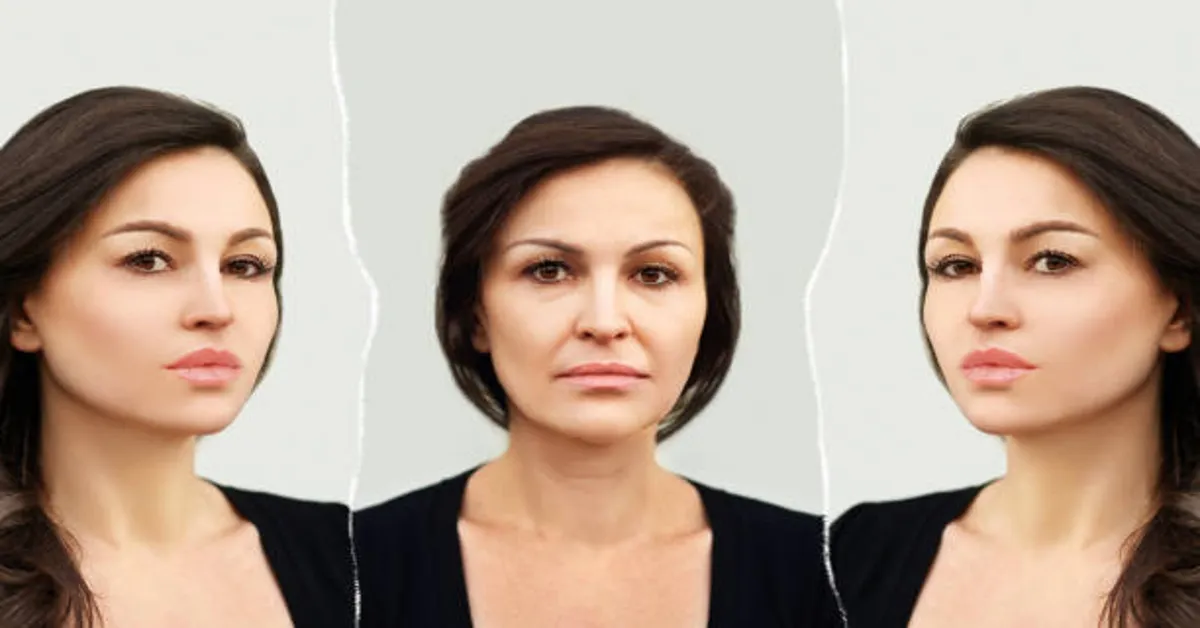In recent years, the term “Ozempic face” has gained tremendous attention across social media platforms, clinics, and even cosmetic practices. It refers to a set of facial changes that occur in some people using Ozempic, a medication initially designed to manage type 2 diabetes but now increasingly used for weight loss. Although the medication itself is generally considered safe and effective, some users have noticed an unintended side effect — sagging, hollow, or prematurely aged facial appearance after losing significant amounts of weight.
This article takes a deep and balanced look at the topic — what Ozempic is, why facial changes occur, how to identify them, and the available safe strategies to manage or reverse the effects without compromising overall health.
1. What is Ozempic?
Ozempic is the brand name for semaglutide, a medication that mimics a naturally occurring hormone in the body called GLP-1 (glucagon-like peptide-1). This hormone plays a role in regulating blood sugar levels and controlling appetite. By activating GLP-1 receptors, semaglutide helps reduce food intake, delay stomach emptying, and promote feelings of fullness.
Originally approved by the U.S. Food and Drug Administration (FDA) for the treatment of type 2 diabetes, Ozempic became well known for another reason — significant weight loss. Many individuals, including those without diabetes, began using semaglutide-based injections as part of medical weight loss programs. However, rapid or substantial fat loss can produce noticeable effects on facial structure, leading to what is now informally referred to as “Ozempic face.”
2. The Science Behind Ozempic Face
The phenomenon of “Ozempic face” is not directly caused by the drug itself but rather by the rate and extent of weight loss it produces. The face, like the rest of the body, contains fat deposits that support the skin and provide a youthful contour. When these fat pads shrink too quickly, the skin may not have enough elasticity to contract, leading to visible sagging, hollow cheeks, and fine lines.
Here’s what typically happens on a biological level:
| Process | Explanation | Visible Effect |
|---|---|---|
| Rapid fat loss | Subcutaneous fat, especially in cheeks and temples, decreases faster than the skin can adapt. | Hollow or sunken cheeks, more defined jawline. |
| Loss of collagen & elastin | Skin’s natural supportive fibers weaken with age and rapid fat loss. | Sagging, wrinkles, droopy appearance. |
| Reduced hydration | Lower caloric intake and hormonal shifts may reduce skin moisture. | Dry, dull skin. |
| Muscle tone reduction | Less stimulation from diet changes and aging weakens facial muscles. | Flattened facial expressions, tired look. |
The combined effect of these factors gives the face a leaner, sometimes older or fatigued appearance — hence the term “Ozempic face.”
3. Why Rapid Weight Loss Affects the Face More Noticeably
Facial fat distribution plays a crucial role in maintaining youthful appearance. Even small reductions in facial fat can significantly change how a person looks. Unlike other parts of the body, facial skin is thinner, and fat loss in this area often results in more visible sagging and lines.
Several key factors make the face more sensitive to weight changes:
- Localized Fat Pads
The face has small, distinct fat compartments (e.g., malar, buccal, temporal pads). When these shrink unevenly, they alter facial balance and symmetry. - Age-Related Skin Changes
Older individuals have less collagen and slower skin recovery. Thus, the same degree of fat loss can appear more dramatic in a person over 40. - Gravity and Elasticity Decline
With age, gravity pulls on the skin, and the loss of elasticity prevents it from tightening naturally after weight loss. - Metabolic Shifts
Semaglutide changes appetite and hydration, which indirectly influences how the skin retains moisture and nutrients.
Therefore, even though Ozempic does not directly cause facial damage, the rapid transformation in body composition can highlight or accelerate visible signs of aging.
4. How to Identify Ozempic Face
While everyone experiences weight loss differently, certain features are commonly reported by individuals or noticed by clinicians in patients who have lost significant weight on Ozempic.
Here are the most common indicators:
| Area of the Face | Possible Change |
|---|---|
| Cheeks | Hollow or sunken appearance, loss of fullness. |
| Jawline | Sharper or more pronounced, sometimes sagging near the chin. |
| Under eyes | More visible dark circles or eye bags. |
| Mouth area | Fine lines around lips and nasolabial folds deepen. |
| Temples | Noticeable indentation due to fat loss. |
| Overall | Tired, aged, or gaunt facial expression. |
These changes can range from mild to pronounced depending on age, genetics, skin type, and the rate of weight reduction.
5. Is Ozempic Face Dangerous?
From a medical standpoint, “Ozempic face” is not dangerous in itself. The condition is primarily cosmetic, meaning it affects appearance but not internal health. However, the emotional and psychological impact can be significant for some individuals.
People may feel self-conscious about looking “older” or “unwell,” even while achieving major health benefits like improved blood sugar control and lower body weight. The emotional disconnect between improved health and altered appearance can cause stress or lower confidence.
In some cases, rapid weight loss may indicate over-aggressive dosing, nutrient deficiencies, or inadequate skin care, which require medical review. Hence, it is essential to work with a healthcare provider to ensure safe and gradual weight management.
6. Preventing Ozempic Face: Proactive Skin and Health Strategies
Preventing facial sagging or hollowing during weight loss involves maintaining skin elasticity, hydration, and nutrition. The goal should be to support the skin’s natural ability to adjust to new body composition.
A. Gradual Weight Loss
Rapid loss (more than 2 pounds per week) increases the likelihood of loose skin. Doctors often recommend slow, sustainable reduction to allow skin time to adapt.
B. Hydration and Nutrition
Adequate hydration supports skin elasticity. Additionally, consuming foods rich in:
- Vitamin C (collagen synthesis)
- Omega-3 fatty acids (skin barrier support)
- Protein (tissue repair)
- Antioxidants (cell protection)
…can minimize visible aging.
C. Strength Training
Building muscle under the skin helps reduce the appearance of sagging by improving overall firmness and restoring natural contours.
D. Skin Treatments
Using topical agents with retinoids, hyaluronic acid, or peptides can help restore elasticity and stimulate collagen production.
E. Regular Medical Monitoring
A qualified provider can tailor Ozempic dosage to ensure optimal balance between weight reduction and aesthetic outcomes.
7. Treatment Options for Ozempic Face
If facial changes are already noticeable, several treatment approaches can restore balance, improve volume, or rejuvenate skin texture. These methods vary in invasiveness, cost, and effectiveness.
| Treatment Option | Type | Description | Expected Results |
|---|---|---|---|
| Dermal Fillers | Non-surgical | Hyaluronic acid injections to replace lost volume. | Instant plumping of cheeks, temples, and under-eyes. |
| Skin Tightening (RF, Ultrasound) | Non-surgical | Stimulates collagen production with energy-based devices. | Gradual tightening over weeks or months. |
| Fat Transfer | Minimally invasive | Uses patient’s own fat to restore fullness. | Natural, long-term improvement. |
| Laser Resurfacing | Non-surgical | Improves skin tone and texture, reduces fine lines. | Brighter, smoother skin surface. |
| Surgical Lift | Surgical | Corrects sagging skin in moderate to severe cases. | Dramatic and lasting results, longer recovery. |
The right approach depends on the severity of fat loss, patient age, and personal aesthetic goals. Always consult a board-certified dermatologist or plastic surgeon.
8. Emotional and Social Impact
While Ozempic face is primarily cosmetic, it carries deep emotional significance for many people. Weight loss journeys often come with great effort, discipline, and lifestyle changes. When those efforts result in an appearance that feels less youthful or less familiar, the outcome can be emotionally complex.
Some individuals report:
- Feeling “older” despite improved health.
- Facing unsolicited comments about looking “sick” or “tired.”
- Struggling with self-image post-weight loss.
- Anxiety about continuing treatment.
Acknowledging these emotional responses is vital. Counseling, peer support groups, and open communication with healthcare providers can help patients navigate the transition more confidently.
9. Comparing Ozempic Face to Other Weight-Loss Side Effects
Weight loss medications can influence the body differently. Let’s compare Ozempic’s impact with other common interventions:
| Method | Mechanism | Common Facial Effect | Skin Recovery Potential |
|---|---|---|---|
| Ozempic (semaglutide) | GLP-1 hormone mimic | Hollowing, sagging due to fat loss | Moderate, improves with time or fillers |
| Diet-based weight loss | Caloric restriction | Gradual fat reduction, mild sagging | High recovery with slow loss |
| Bariatric surgery | Caloric malabsorption, hormonal shifts | Rapid fat loss, loose facial and body skin | Low natural recovery, may require surgery |
| Ketogenic diet | Carb restriction, rapid fat burning | Potential dehydration, reduced fullness | Moderate, depends on hydration and nutrition |
The takeaway is clear — the speed of fat loss matters more than the method. Controlled, monitored reduction is less likely to cause unwanted facial changes.
10. Dermatological Insights: Expert Perspectives
Dermatologists and aesthetic physicians emphasize that Ozempic face is not a separate medical condition but rather a predictable aesthetic response to weight loss. The term gained traction because the medication made rapid and substantial loss possible for a large population, many of whom had never experienced such changes before.
Key points from clinical experience:
- Patients over 40 are more prone to visible changes.
- Gradual weight loss allows collagen remodeling to keep up.
- Preventive skincare should begin early in the treatment.
- Combining weight management with collagen-stimulating therapies can help maintain youthful skin texture.
In other words, prevention and maintenance work better than correction after the fact.
11. Long-Term Outlook and Skin Recovery
The good news is that skin can recover over time — especially when weight stabilizes. The recovery depends on genetic factors, age, and overall health.
Some encouraging facts:
- Mild sagging may improve within 6–12 months after weight stabilization.
- Skin treatments can accelerate collagen rebuilding.
- Maintaining consistent hydration, sleep, and nutrition supports repair.
However, in severe cases where skin elasticity is permanently reduced, non-surgical or surgical tightening may be required for full correction.
12. Safe Use of Ozempic and Medical Guidance
It’s important to remember that Ozempic is a prescription-only medication meant for people under medical supervision. Using it for cosmetic weight loss without guidance can lead to inappropriate dosing and unnecessary side effects.
Key safety practices:
- Always consult a licensed endocrinologist or obesity medicine specialist.
- Never self-inject or increase dosage without approval.
- Monitor hydration, nutrition, and mood regularly.
- Discuss any aesthetic or physical concerns early in treatment.
When used responsibly, Ozempic remains one of the most effective and well-tolerated medical aids for weight loss.
13. Supporting Skin Health Naturally During Ozempic Treatment
You can protect your facial health using holistic and natural methods alongside medical treatment. Consider the following strategies:
A. Nutrition-Rich Diet
Focus on nutrient density rather than calorie restriction. Include:
- Leafy greens, berries, and citrus fruits for antioxidants.
- Avocados, nuts, and fish for healthy fats.
- Lean meats, beans, and eggs for collagen-building proteins.
B. Gentle Skincare Routine
Avoid harsh exfoliants or alcohol-based cleansers that strip the skin. Use mild, pH-balanced products with replenishing ingredients.
C. Massage and Exercise
Facial massage improves circulation and lymphatic drainage. Regular physical activity enhances collagen synthesis and skin oxygenation.
D. Avoid Smoking and Excess Alcohol
These deplete collagen and reduce skin repair capacity, worsening sagging.
E. Sun Protection
Ultraviolet damage accelerates collagen breakdown, compounding facial aging. Apply SPF daily, even indoors.
14. Myths and Misconceptions About Ozempic Face
Myth 1: Ozempic destroys facial tissue.
Fact: It does not damage tissue. It simply causes fat reduction due to weight loss, similar to dieting effects.
Myth 2: Everyone on Ozempic develops sagging skin.
Fact: Not all users experience this. Younger patients or those losing weight gradually often see minimal changes.
Myth 3: Stopping Ozempic reverses facial changes immediately.
Fact: Once fat is lost, it doesn’t return automatically; stopping the medication doesn’t restore lost volume.
Myth 4: Fillers are unsafe for Ozempic users.
Fact: When performed by professionals, fillers are safe and effective for volume restoration.
Myth 5: It’s only about vanity.
Fact: Appearance changes affect emotional health and self-esteem, which are important aspects of overall wellness.
15. When to See a Doctor or Dermatologist
If you notice:
- Rapid, uneven facial sagging.
- Extreme fatigue or nutrient deficiency symptoms.
- Emotional distress related to body image.
- Persistent dehydration or dizziness.
It’s wise to discuss these with a healthcare provider. They can adjust your treatment plan or refer you to a dermatologist for supportive therapy.
16. Future Research and Awareness
The rise of Ozempic face highlights the need for integrated approaches to weight loss that consider both physical and psychological wellbeing. Future studies are exploring:
- How gradual titration of semaglutide affects skin adaptation.
- Combining GLP-1 therapy with collagen supplements.
- The role of personalized skincare during weight management.
Public health education can also reduce stigma by framing Ozempic face as a normal, manageable response to rapid fat loss — not a failure of treatment.
Conclusion
“Ozempic face” is not a disease, nor is it a sign of something gone wrong. It’s a visible byproduct of successful weight reduction — a reminder that the skin, like every organ, needs time and support to adapt to change. With thoughtful care, balanced nutrition, and appropriate cosmetic or medical interventions, most people can maintain both their improved health and their natural confidence.
The ultimate takeaway: health and beauty are not opposites — they can and should coexist. Ozempic face, when understood and managed properly, is just another chapter in the broader journey toward better wellness.
ALSO READ: Inside the Rise of Wurduxalgoilds Products: A New Era of Multi-Dimensional Innovation
Frequently Asked Questions (FAQs)
1. What exactly causes Ozempic face?
Ozempic face results from rapid fat loss due to semaglutide treatment. The skin cannot tighten fast enough, leading to sagging and hollowing.
2. Is Ozempic face reversible?
Yes, partially. With time, proper nutrition, hydration, and treatments like fillers or laser therapy, facial fullness can often be restored.
3. Can younger people also experience Ozempic face?
Yes, but it’s less common. Younger skin is more elastic and can adapt better to weight changes.
4. How can I prevent facial sagging during Ozempic treatment?
Focus on gradual weight loss, maintain hydration, eat collagen-boosting foods, and use skincare with retinoids or hyaluronic acid.
5. Should I stop Ozempic if I develop facial changes?
Not necessarily. Consult your healthcare provider; adjustments in dosage or additional skin treatments may address the issue without discontinuing the medication.









